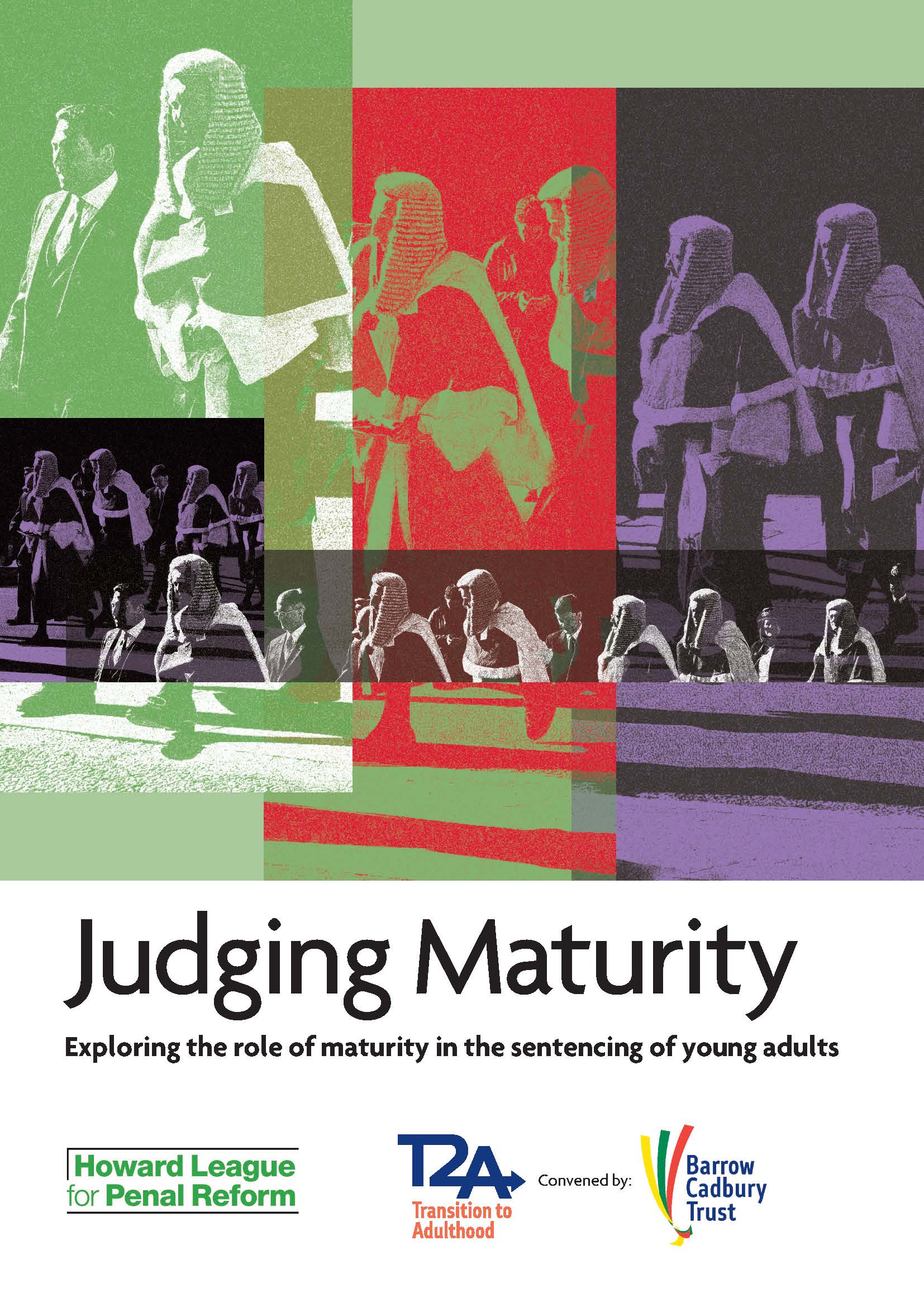The Sentencing Council should work towards developing formal sentencing principles for young adults, similar to the principles that are in place for children, says a report published by the Howard League for Penal Reform and T2A.
The report, Judging Maturity: Exploring the role of maturity in the sentencing of young adults, presents research by the Howard League, a member of the T2A Alliance.
The Howard League analysed 174 court judgments in cases involving young adults, focusing on how judges considered the concept of maturity. The findings suggest that the age and maturity of young adult defendants are not sufficiently considered by the courts at present. However, the research also shows that where a young adult’s immaturity is raised by court professionals, the courts are well placed to factor it in to achieve better outcomes – and more likely to do so if sentencing guidance encourages it.
There is substantial evidence that young adults – aged 18 to 25 – should be treated as a distinct group from older adults, largely because they are still maturing – neuroscience research has proven that brain development continues well into the mid-20s. Reaching adulthood is a process, not an event, and the key markers of adulthood, such as independent living, employment and establishing relationships, happen at different times for different young people.
Young adults are more likely to be caught up in the criminal justice system than older adults. They face significant difficulties coping in prison, where both the suicide rate and violence rates are higher among their age group than among the prison population as a whole, and they have higher reconviction rates following release than older adults. Between 2006 and 2016, 164 people aged 18 to 24 died in custody, including 136 who died by suicide.
While there is a wealth of guidance and case law concerning the sentencing of children, there is no set of principles to ensure that judges take a tailored approach to sentencing young adults. Tens of thousands of young adults who appear before the courts for sentencing each year would benefit from a distinct approach.
Age has long been accepted as a mitigating factor in sentencing, both in terms of being very young and also very old. More recently, the concept of lack of maturity has been introduced into formal sentencing guidance as a mitigating factor. This does not require a court to assess maturity at the point of sentence, however; maturity can only be considered if raised in mitigation on behalf of the young person.
The Howard League’s analysis of court judgments found that the inclusion of age and/or lack of maturity in Sentencing Council guidance had not made a significant difference as to whether or not maturity was considered. However, where the relevant sentencing guideline included age and/or lack of maturity, and the court considered that factor, it was more likely to result in a reduction in the sentence on appeal.
The research suggests that professionals need to be encouraged to bring these factors to the court’s attention and sentencers need to be encouraged to consider these factors of their own will. It also indicates that guidelines can make a positive difference and empower sentencers to reduce sentences on account of lack of maturity and/or age.
In a report published last year, the Justice Committee found that research from a range of disciplines strongly supported the view that young adults are a distinct group with needs that are different both from children under 18 and adults older than 25.
The report states: “In the context of the criminal justice system this is important as young people who commit crime typically stop doing so by their mid-20s. Those who decide no longer to commit crime can have their efforts to achieve this frustrated both by their previous involvement in the criminal justice system due to the consequences of having criminal records, and limitations in achieving financial independence due to lack of access to affordable accommodation or well-paid employment as wages and benefits are typically lower for this age group.”
The Justice Committee concluded that young adults were still developing neurologically up to the age of 25 and had a high prevalence of atypical brain development.

